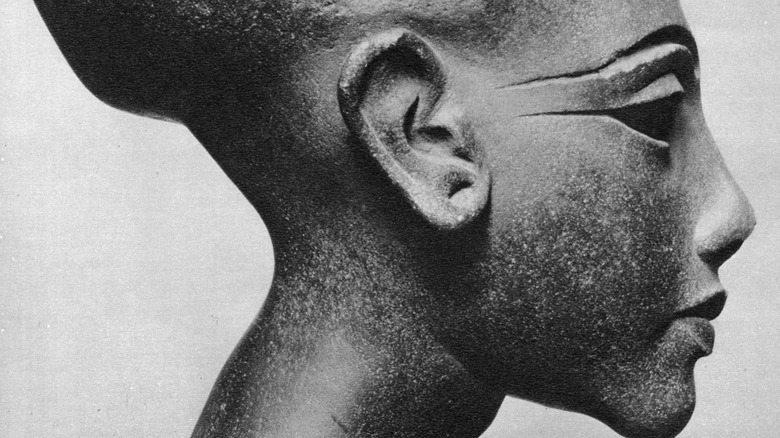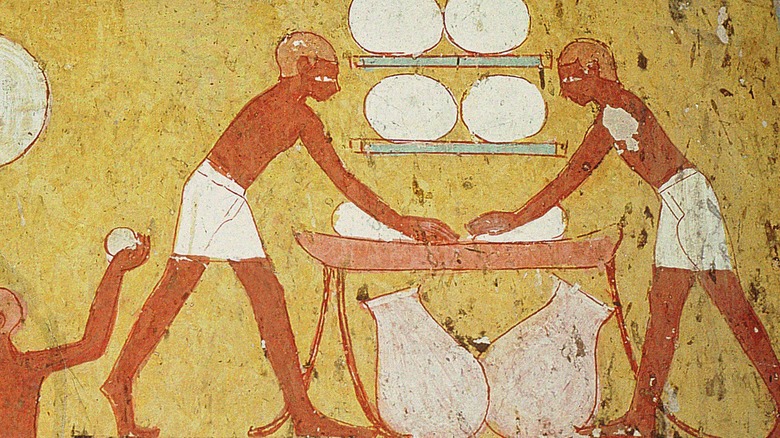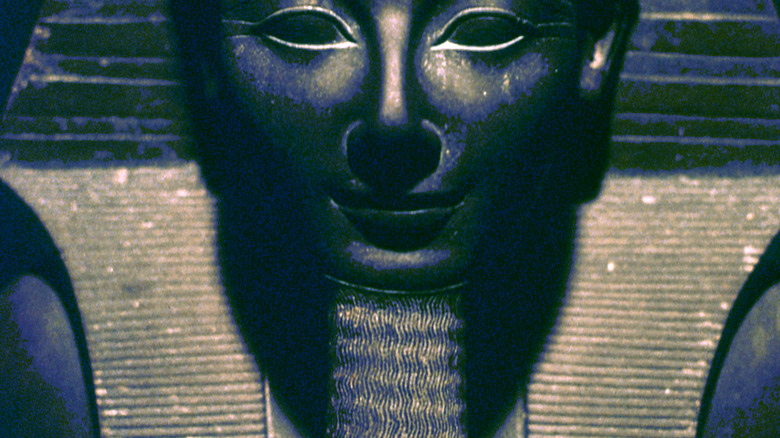Why Ancient Egyptians Shaved All Their Hair
Have you ever looked at art from ancient Egypt and wondered why the people depicted sometimes have shaved heads? This fashion trend most likely had two practical purposes. It helped keep people cool in Egypt's desert climate, and it protected them from lice, according to Great Value Vacations. Cleanliness was also very important in ancient Egyptian culture. The Greek historian Herodotus wrote that the Egyptians bathed several times daily.
For priests, the grooming ritual was even more intense. They were required to remove all the hair on their bodies every three days, including their eyebrows and eyelashes. This ensured that they were clean enough to perform rituals. However, hair fashion wasn't the same for everyone in ancient Egypt. "People presume the ancient Egyptians shaved their heads. The priests and priestesses did, but not everyone. They did take pride in their appearance," Maria Perla Colombini of the University of Pisa, Italy told New Scientist.
Differing dos
Like in many cultures, hairstyles in ancient Egypt depended on people's class, age, and gender, according to Great Value Vacations. Enslaved people, for example, were not allowed to wear the same hairstyles as free people. Children typically had their entire head shaved except for a single lock of hair to represent their childhood. As they grew, boys typically shaved their heads while girls preferred plaits or ponytails. Grown men kept their hair short and either cut it around the ears or let it curl over them. Women either wore their hair long and smooth or in bobs.
The quality of hair care also depended on your social class. Barbers were very important in ancient Egypt. Wealthy individuals could afford to have their own live-in barbers to maintain their looks, according to Nomad Barber. However, regular people had to rely on street barbers, just like today. This is another reason why the fully clean-shaven look was restricted to very rich or important people like kings or priests.
The art of ancient Egyptian hair care
How did ancient Egyptians maintain their clean-shaven looks? At first, priests had to rely on tweezers, waxing or sugaring to remove all their body hair, according to Nomad Barber. However, soon razors were developed. Kings were even buried with razors covered in gold or jewels so that they could maintain their appearance in the afterlife. Waxing mixtures included crushed bird bones, oil, sycamore juice, and gum, according to Great Value Vacations. People also used pumice stones and hair removal creams.
Wigs and false beards were also popular fashion items, according to booksy. Wigs were one part fashion statement — one part heat protection. Pharaohs even wore a special false beard called an osirid that was made from silver or gold. They usually donned these chin pieces for special occasions. They wore straight beards before death and curly ones to the afterlife as a symbol of their new status as a deity.
Ordinary Egyptians maintained their hair care after death too. Scientists looking at a common grave around 3,000 years old found that men and women ages 4 to 58 were embalmed with their hair styled in a gel made out of fat, New Scientist reported. They also found tomb paintings of people with cone-shaped lumps of animal fat on their heads. "Once we started looking [for these], we found interesting hairstyles," Natalie McCreesh of the University of Manchester, U.K. told New Scientist. "The hair was styled and perfectly curled." Ancient Egyptian hair care was eternal.


